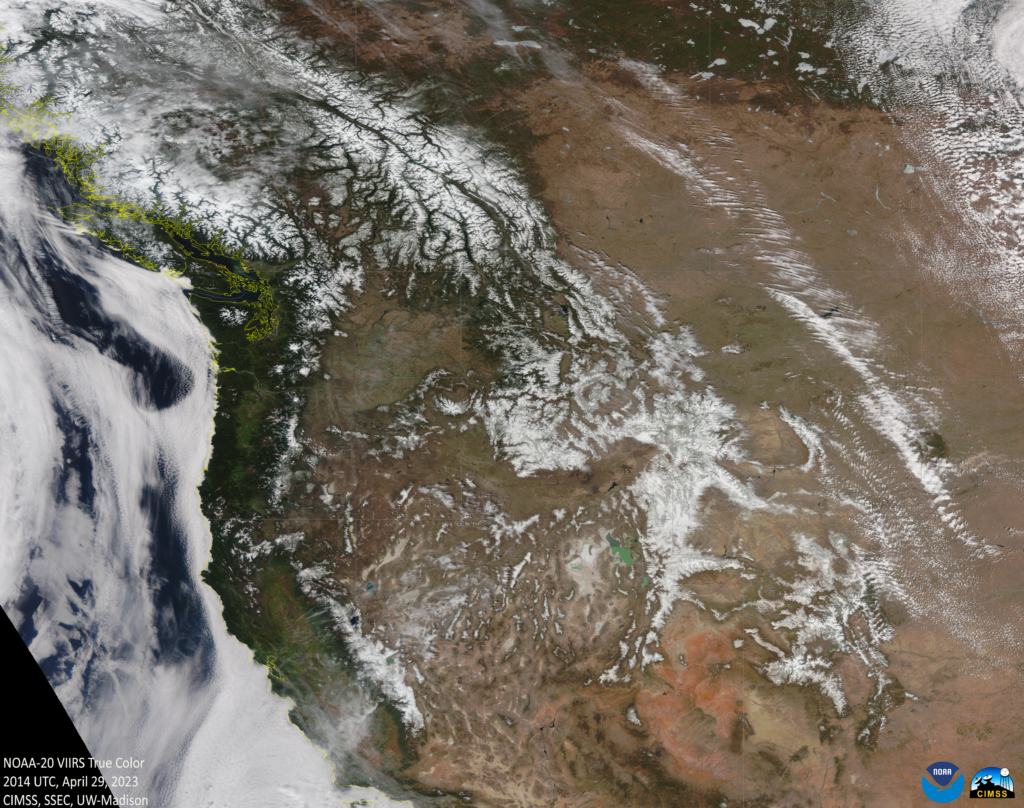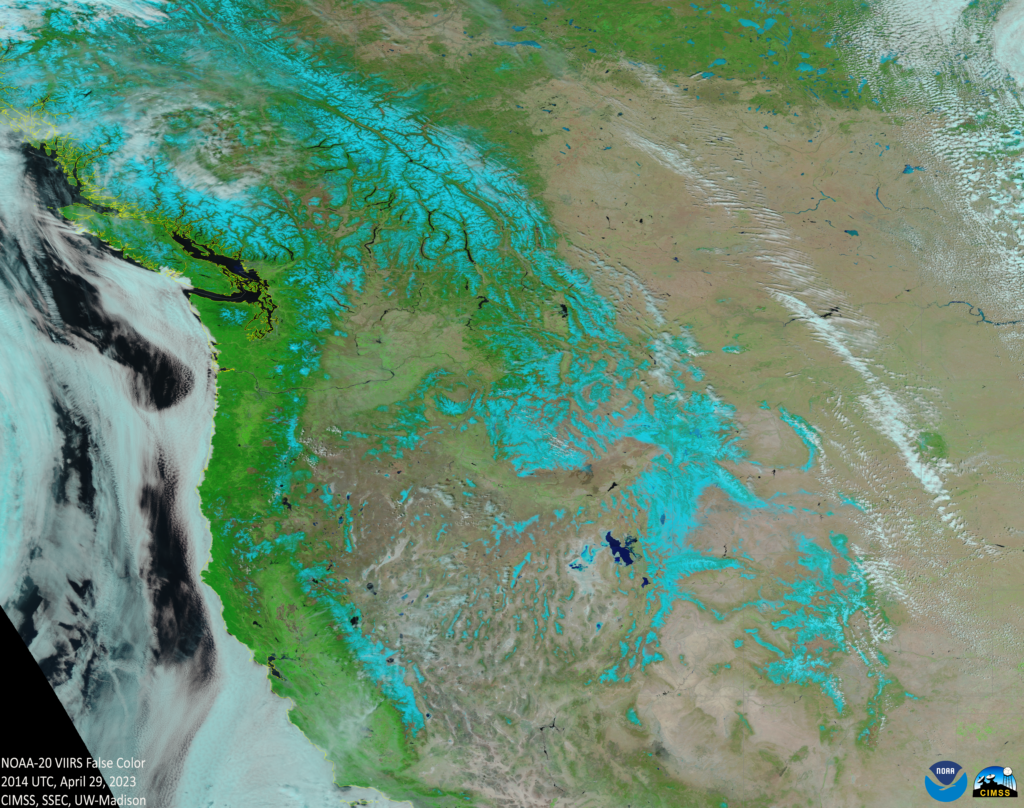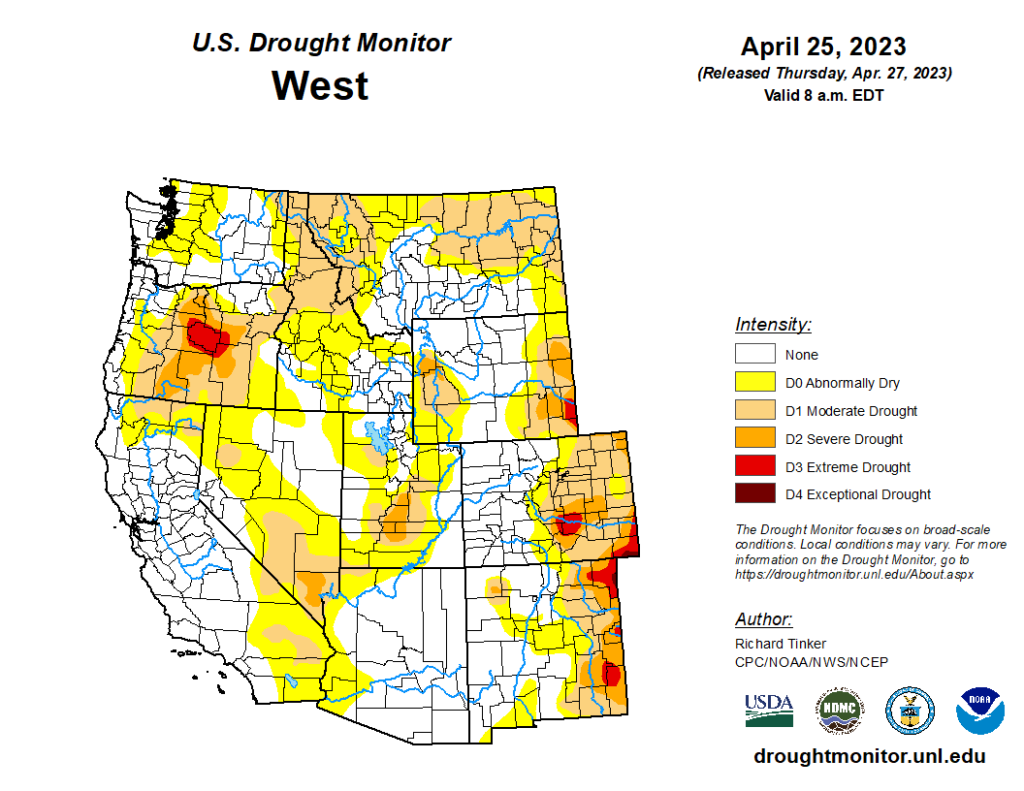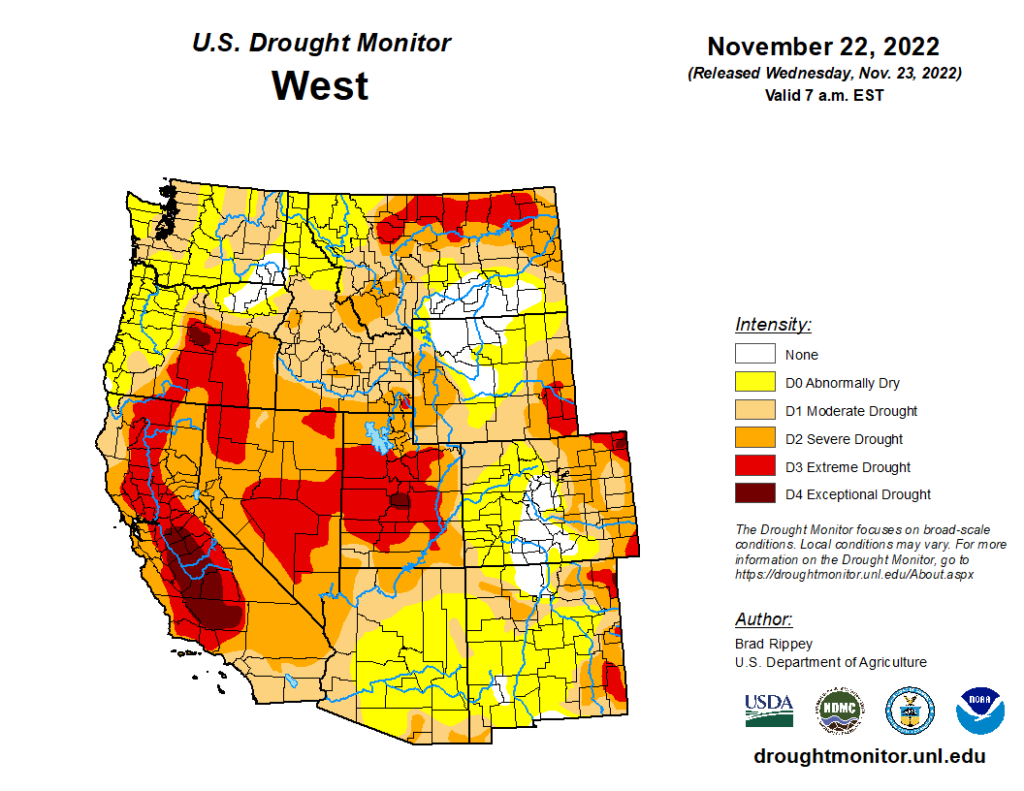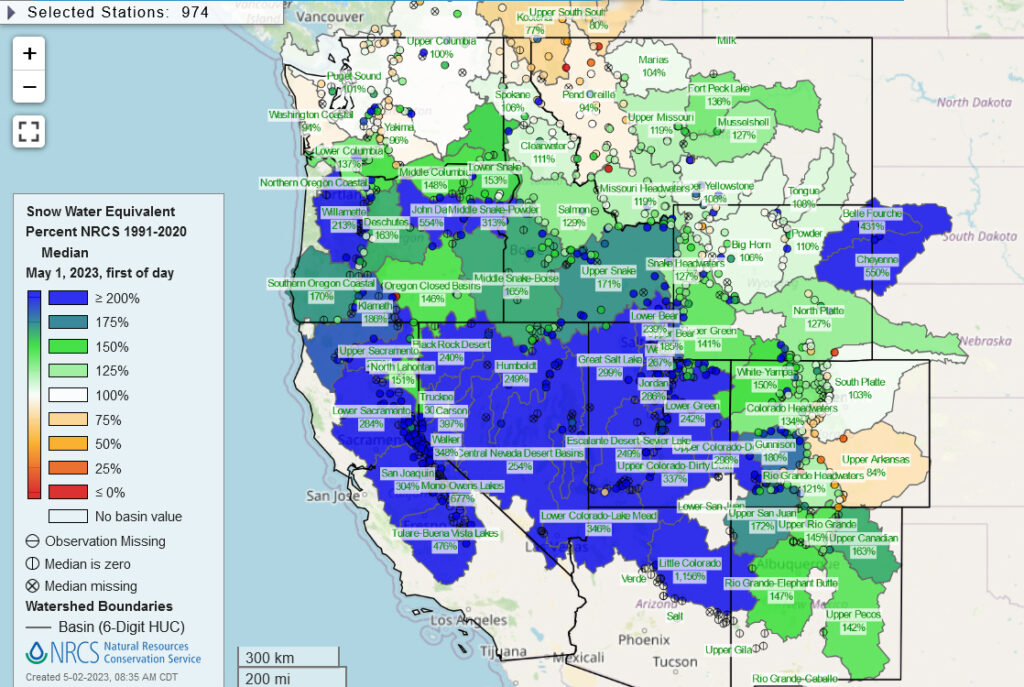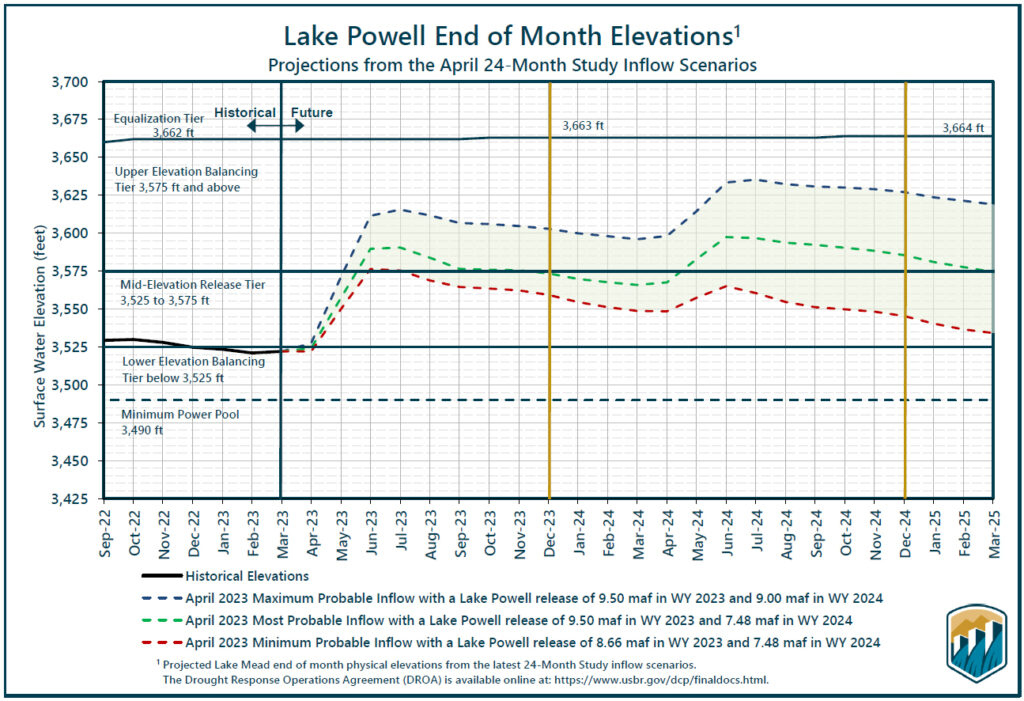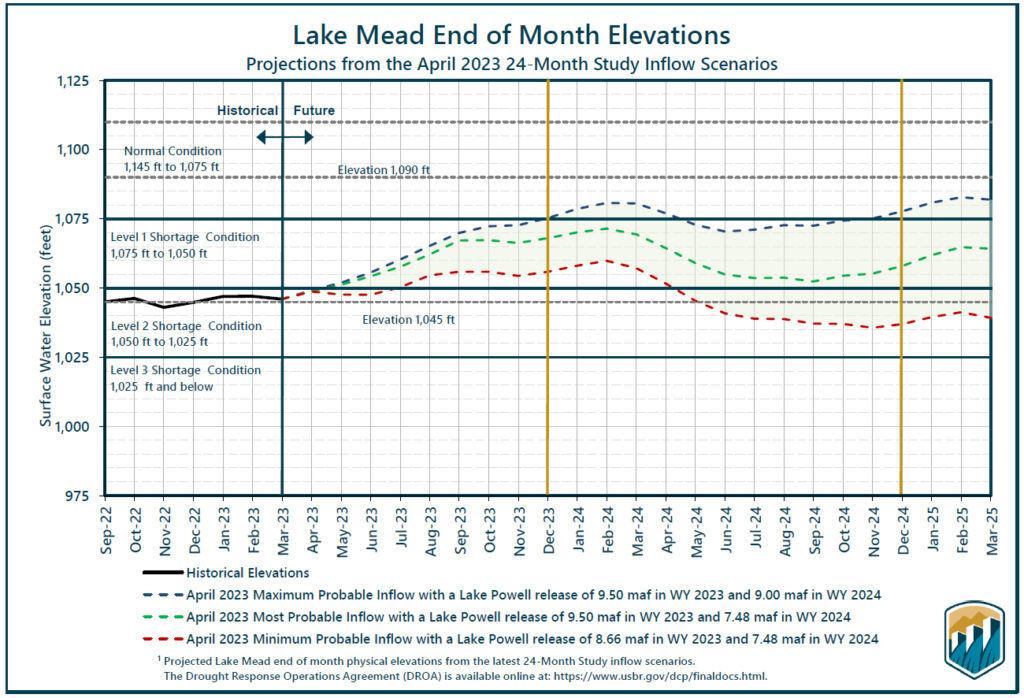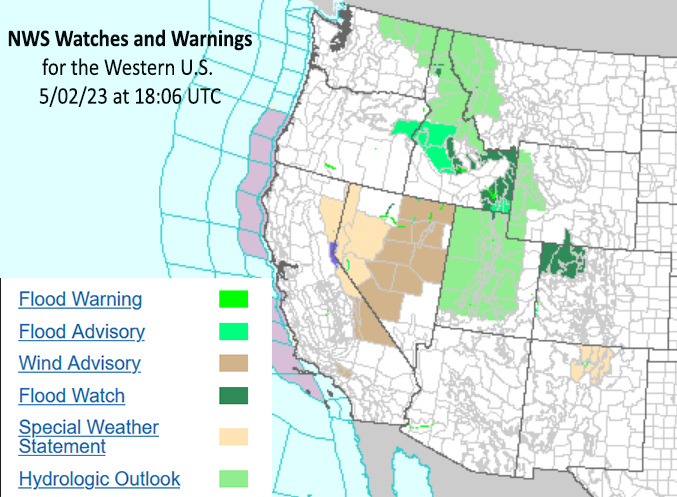Record snowpack eases long-term water woes while raising short-term flooding risks
From coastal California to the Sierra Nevadas to the Rocky Mountains, precipitation totals this past winter reached historically high levels, especially when it comes to snowfall and mountain snowpack. The health of western watersheds in terms of mountain snow is readily apparent in VIIRS True and False Color imagery.
Significant drought relief occurred over the winter months as well, as seen in these graphics from the U.S. Drought Monitor comparing April 2023 to November 2022. Atmospheric Rivers played a huge part in the turn-around. California is nearly drought free!
And according to the USDA, many snowpack levels were still at or above 200% as of May 1st. For states like Utah, where 95% of municipal water comes from melting snow, this is great news.
It seemed somewhat intuitive that Lake Powell and Lake Mead, two of the largest reservoirs out west, would benefit from the wet winter. Now a recent report from the Bureau of Reclamation confirms this scenario. Record snowpack in Utah, Colorado and Wyoming are expected to boost lake levels with inflow (melting snow) projected to be 177% of average during the April-July runoff period. Graphs included in the report (below) show rebounding lake levels benefiting from the historically high snowpack through 2024. But they also show that lake levels will likely remain below historical averages.
Meanwhile in the short term the National Weather Service has issued numerous Flood Watches, Advisories and Warnings from the Canada-U.S. border to southern Utah due to rapidly melting snow. The water is freezing cold rushing in high, fast flows. Along with avoiding flooded areas, the NWS is advising people to stay away from river banks where erosion could result in sudden surprise submersion and nearly instant hypothermia.


